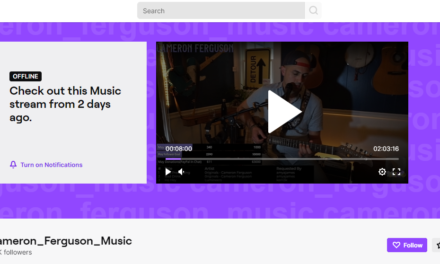In a 2013 post, Newsweek journalist and HubSpot writer Dan Lyons writes, “It’s Happening: Corporate Media is Getting Better than Mainstream Media.” The brand newsroom began pushing its boundaries–moving beyond being a dumping ground for dry press releases. Big brands started to develop publishing platforms with the goal of humanizing and igniting excitement around their products, activities, and brands. On these platforms, they upload how-to, explainer, and opinion blog posts.
Google fueled the content revolution by demanding companies fill the internet with high-quality, helpful, and unique information. The search engine wants to deliver a quality product to its users and when Google is happy, everyone is happy.
Today, companies like Qualcomm, GE, and Tesla create content on topics their audiences crave. When a factory manager reads a clear and informed GE Report post on the two largest turbines ever created, he begins to build a positive impression of the company. His appreciation of the timely information can even engender goodwill.
General Electric’s GE Reports subsections have many articles that don’t even mention General Electric. They may, however, have links to GE press releases, other posts, and even service and contact pages. On the other hand, the History and Industrial Internet sections do have titles like, “Kurt’s Cradle: Kurt Vonnegut was GE’s PR Man” and “GE Buys $500 Machine Analytics Firm.”
These large companies have seen a great deal of success with a branded newsroom approach, and some initiatives have even been recognized in industry awards. With enterprise success in the branded newsroom model, small and medium-sized businesses are scrambling to catch up and develop newsrooms of their own.
There is no one way to establish a brand newsroom. Small and medium-sized companies can follow larger enterprise examples, but will likely see the most success if they tailor their own newsroom to accommodate their goals.
What Does Brand Journalism Look Like?
Walking the brand newsroom line can be a delicate operation between subjective promotion and objective journalism. Most CMOs are familiar with sales copywriting that appears on brochures and website pages, the goal of which is to drive an action (a phone call, a form-fill, etc.) This writing format pushes the benefits of the company’s product or service and overcomes potential objections a consumer may have. CMOs have also become accustomed to the helpful blog post that provides information while keeping the sales lingo limited.
Then there’s the old public relations standby: the press release, a short and dry, “just-the-facts-ma’am” communication designed to get reporters to feature the company in a story or inform the community about large developments. Brand journalism can encompass parts of all of these formats. Officially falling into the content category, marketers see brand journalism as the art of communicating brand news in a more journalistic and entertaining format. It will be more subjective than the press release but stop short of including the sales language that appears in copywriting.
The Brand Newsroom Payoff
Google shocked commerce with its ground-breaking Zero Moment of Truth Macro study of consumers’ shopping habits. The company explained that the new consumer checks 10.4 pieces of content before making a buying decision. Adobe’s “State of Content” study revealed that Millennial consumers use an average of seven devices (smartphone, tablet, etc) and 14 sources (search, social media, etc) before buying. Baby boomer consumers use four devices and nine sources regularly. Because consumer attention now rests on their devices, brands must be there as well.
The shift to the internet also puts the consumer squarely in control of what he or she will consume. They can click away from a YouTube ad in under four seconds and close a pop-up in a millisecond. Not only have many internet users incorporated ad blockers for both websites and social media, but they have also developed “ad blindness.” The effectiveness of promotion as an interruption (ads) has been waning for over five years now. To get today’s consumer’s attention, brands must provide high-quality, useful, and entertaining content.
The benefit of this new paradigm extends to brands as well as consumers. When consumers can search for exactly what they want, they get to those vendors more quickly. Companies—rather than publishers—can be right there providing answers. With the correct structure, content can eventually nudge the consumer in the direction of a sale.
That brands can win eyeballs away from publishers proves another advantage. Today, Millennials get their news from Facebook and Twitter. Smart brands publish the availability of their content on these channels, which in turn posts them in users’ feeds right alongside friend updates, articles from the New York Times, and recipes from Cinnabon. Social media users see new family photos, articles from their favorite publications, and posts from brands they follow in equal measure. Brands benefit from the draw friends and publishers create.
Getting a Brand Newsroom Started
It’s time businesses of all sizes assimilated the digital era phrase: “Every brand is a publisher.”
Small and medium companies don’t have to create entire departments in order to capture today’s web-surfing consumer. Instead, the term brand newsroom helps marketers and business owners turn useful experiences and robust knowledge into helpful, and even suspenseful, content pieces.
Brand Newsroom Do’s
- Have a strategy. Will your brand newsroom exist mostly to create brand awareness; add your opinion to industry news and boost your authority (also known as thought leadership); generate leads. Calls to action and the structure of your posts will differ depending on your underlying goals.
- Stay as close to objectivity as possible. While paradigms are quickly changing, consumers have been trained to expect journalism to be transparent and objective. If you have a conflict of interest, disclose it. Stick to the truth.
- Consider the types of articles you’ll produce in your newsroom. Will you create how-tos, explainers, industry trends, or research articles?
- Be brave enough to establish a voice. Stay away from bland, brand-speak.
- Consider hiring a journalist or agency with media experience. They will examine your assets and propose articles that will propel the brand.
- Develop an editorial calendar. This will help you keep everyone on the same page, and keep you accountable to a schedule.
- Create a structure for your brand newsroom. Assign an editor, writers, and a copy editor. Running articles through several individuals improves quality and relevance.
- Assign a publisher, generally the CMO or business owner. The publisher will ensure that the articles promote the brand. The corporate newsroom exists to increase awareness and eventually revenue and, as such, is more subjective than a traditional newsroom.
- Give your media or PR department signoff on topics, as well as the publisher.
- Set reasonable goals from the outset. How much more traffic do you think your articles should drive to your website? Track which posts generate the most page views. Monitor content performance on a monthly basis.
- Write more of what works. Watch how your content performs through Google Analytics or SEO tools. Phase-out poor-performing titles and increase articles on the topics that have robust engagement.
Content produced by a well-structured brand newsroom can provide helpful information to a target audience. As consumers find information in new ways, brands must provide exactly what they’re looking for. Smart small and medium-sized businesses will jump on the opportunity to solve problems and elicit goodwill on very specific topics through their brand articles and embrace the newsroom model.







